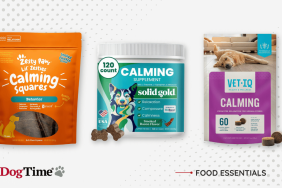Fatty layer under the skin in dogs happens when the fat tissue just under the skin becomes inflamed. The condition often affects a dog’s trunk area.
All dogs can develop the condition. However, the Collie, Miniature Poodle, and Dachshund breeds seem to suffer from it the most.
Technically, the condition is also called panniculitis.
If you see the signs of fatty layer under the skin in your dog, then get to a veterinarian for a proper diagnosis and treatment.
Here’s what you should know about the symptoms, causes, and treatments for the condition.
Symptoms of Fatty Layer Under the Skin in Dogs
The condition mainly produces the symptom of a lump-like lesion on the trunk. This lump can turn into an ulcer, bleed, or become infected. Additionally, more than one lump can form.
Some of the other symptoms of the condition include:
- Acting depressed
- Anorexia
- Seeming lethargic
Causes of Fatty Layer Under the Skin in Dogs

The cause of the condition can be one of a number of things. For instance, some of the most frequent causes include:
- Infection (bacterial or fungal)
- Immune system diseases
- Trauma
- Injections
- Burns
- Vitamin E deficiency
Unfortunately, the following breeds of dog are most at risk of developing the condition:
- Dachshund
- Collie
- Miniature Poodle
Treatments for Fatty Layer Under the Skin in Dogs
Firstly, your vet will ask about your dog’s symptoms and medical history. Secondly, your vet will carry out a full physical examination of your dog. Additionally, blood and urine tests will be taken.
Generally, the condition can be diagnosed from the presence of the lump. Your vet will also take a sample from the lump and get it analyzed.
Ultimately, treatment usually means a surgery to remove the lump. Additionally, medication can be used to fight off any infections that have developed.
As always, if your vet prescribes your dog any medicine, stick to the precise dose and frequency instructions. Also, complete the full course of medicine.
While recovering at home it is important to provide your dog with a quiet and calm environment. Also, keep up regular visits with your vet to monitor their recovery.
Have you ever cared for a dog who suffered from this condition? How did your vet help your dog recover? Let us know in the comments section below.









